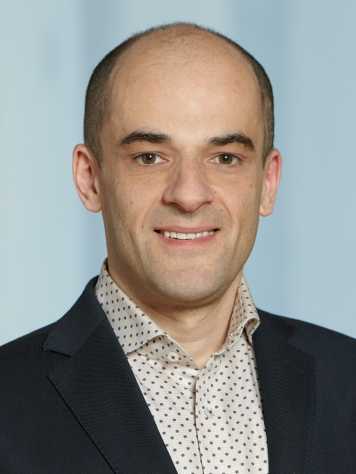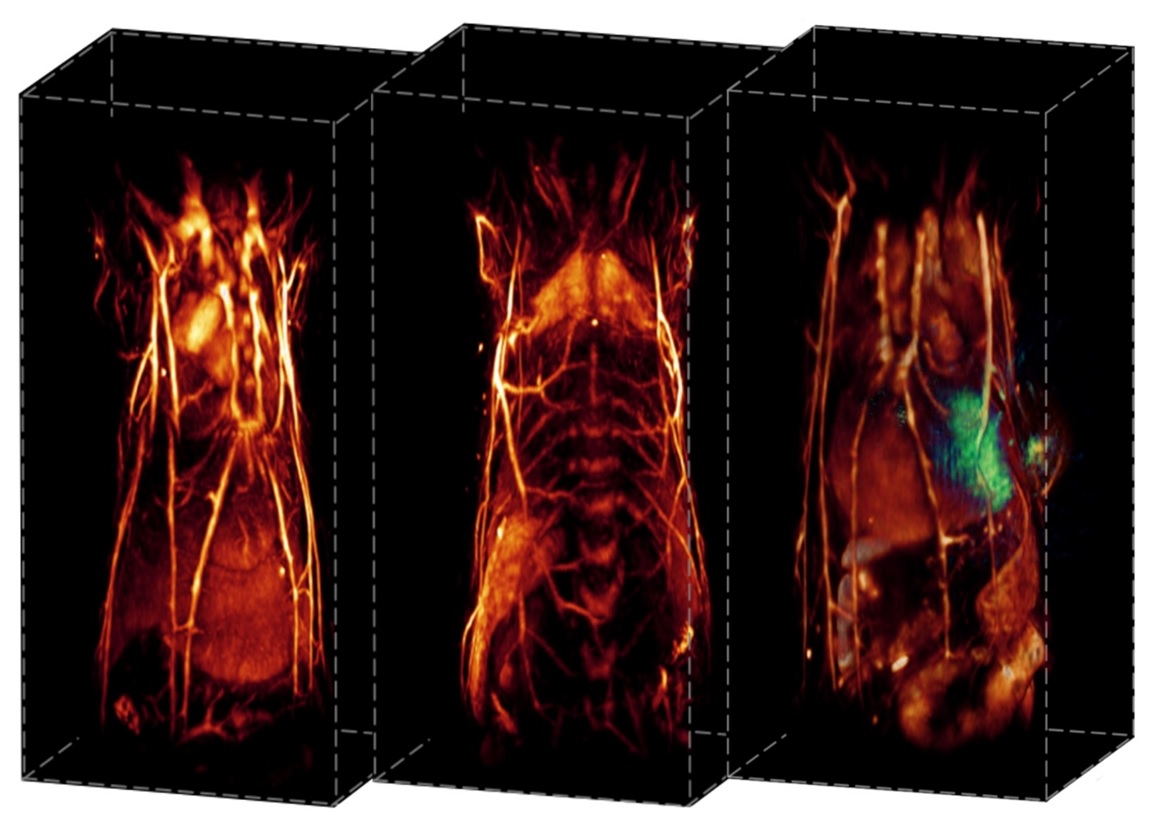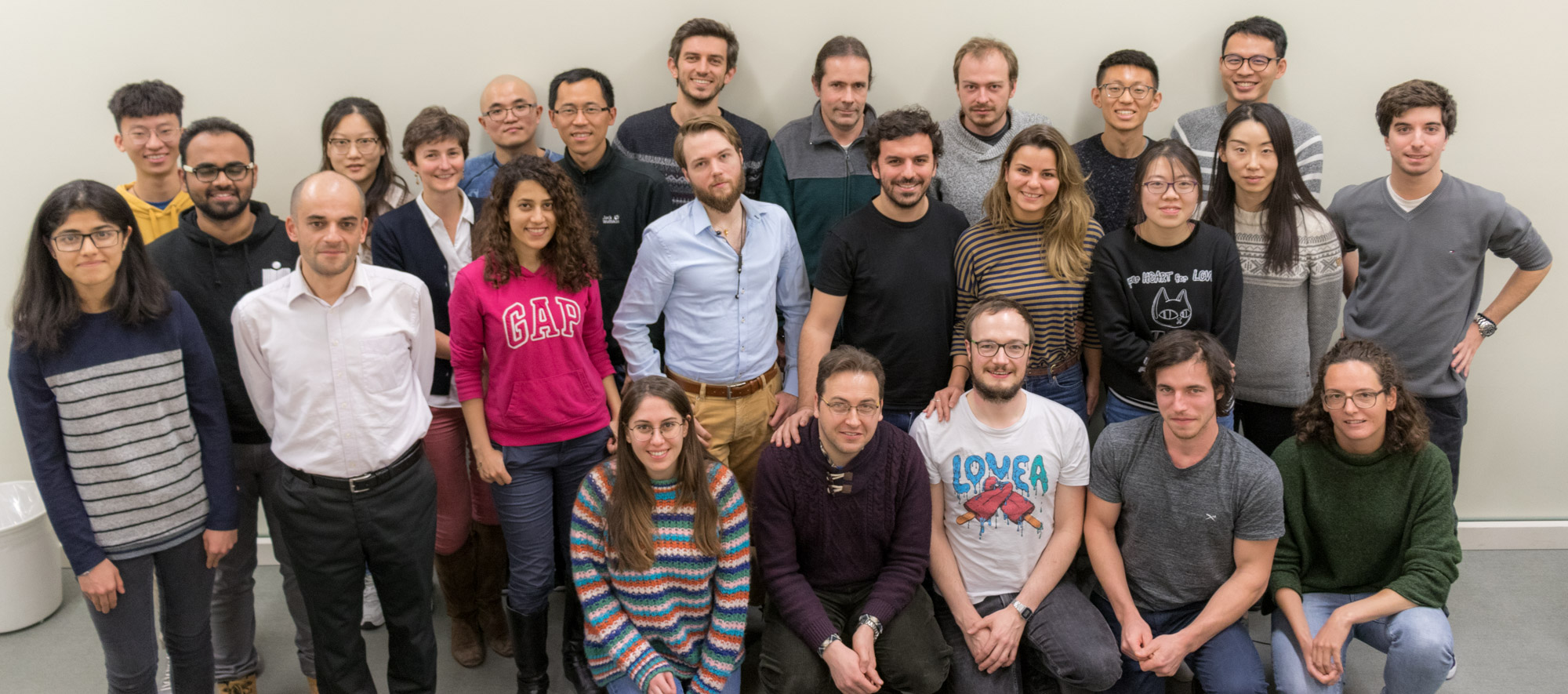“I was born an engineer”
Daniel Razansky is Professor of Biomedical Imaging at the Institute for Biomedical Engineering (IBT) of ETH and the University of Zurich. In this interview, he explains how his research helps to recognize diseases in an early stage and why combining engineering and medicine was a very natural choice for him.

Prof. Razanksky, what is your main area of research?
Throughout my scientific career I have been developing new functional and molecular imaging methods, a research field at the interface of engineering, physics, biology, chemistry and medicine. A more general description would be biomedical imaging, which is also the title of my professorship. We focus on methods that can sense specific functional and molecular information from living tissues not available with conventional bio-imaging modalities. There is a great need to recognise diseases at an early stage, so they are easier to cure. For that purpose, we develop various new techniques involving biomedical optics, magnetic resonance imaging, and ultrasound. Apart from early diagnosis we also work on devising smart “theranostic” approaches that combine therapeutics with diagnostics. This resonates well with the idea behind “precision medicine”, trying to achieve accurate diagnosis and tailor treatment approaches to individual patients rather than the general population.
What brought you to this field? Why does it fascinate you?
I believe I was born an engineer so basically my genes brought me to this field! (laughs). As a kid I remember being constantly engaged in taking apart and reassembling electronic devices. The field of biomedical engineering is all about applying engineering approaches to biomedicine. It was quite a natural choice also because my parents are medical doctors specializing in psychiatry. Many of the diagnostic and therapeutic approaches I came across often looked pretty arbitrary to me, that is why I strived to come up with more precise ways of identifying and curing diseases.
So I studied electrical engineering at the Technion – Israel Institute of Technology, followed by a PhD in biomedical engineering. After that, I completed a postdoctoral training at Harvard Medical School and in 2007 moved as a young faculty member to the Technical University and Helmholtz Center in Munich before joining ETH and University of Zurich in 2018.
What is the impact of your research on society? And what are currently the biggest challenges in your field of research?
In biomedical engineering the true impact is accomplished when your research results are translated into clinical practice. We are now starting a new project supported by the Swiss National Science Foundation (SNF) to install a clinical multispectral optoacoustic tomography system we developed over the last decade at the University Hospital Zurich, the first in Switzerland. In optoacoustic imaging, very short laser pulses are sent into the tissue, where they are absorbed and converted into ultrasonic waves. The detected waves are converted into images, similarly to ultrasound images but with a very different contrast, more reliably representing functional and molecular information from living tissues. Different fields, such as cardiovascular medicine, neuroscience, cancer diagnostics or metabolic research, can benefit from this new method.

Another important aspect of our activities is commercialisation. New methods developed by academics must be made available to others. I was on the founding team of “iThera Medical”, a spin-off company in Munich that successfully commercialized many of the optoacoustic inventions from my lab and installed imaging scanners at dozens of biological research labs and clinical facilities around the globe.
A further major challenge is making our new imaging technologies affordable and accessible. It is highly desirable to develop small and portable diagnostic devices, which can easily be transferred between rooms and buildings, and also wearable or smart-phone-based devices. This particularly concerns remote areas where advanced medical care is not readily available.
You use methods of artificial intelligence to improve biomedical imaging. Can you give us more details?
I am fascinated by artificial intelligence approaches in general, and I think biomedical imaging can derive great benefit from those methods. For instance, last year we published a pioneering work on image artefact removal and boosting quality of optoacoustic tomography with deep learning. Those types of algorithms are ideal for this purpose because you can train them to recognize good quality images coming from optimally-designed sophisticated instruments and then apply the trained algorithm to improve quality of images acquired by inferior or simplified systems. However, AI is no magic and can’t solve all problems of the mankind. It has to be used intelligently. Some people think it may replace human intelligence and creativity. I doubt it will ever do, at least I hope it won’t! Moreover, machine and deep learning are very energy consuming processes with an extremely high carbon footprint and should be used with caution. Nevertheless, in many automated or routine tasks where human intelligence would be, let’s say, wasted, artificial intelligence could be much more efficient and make our lives better.
““I am fascinated by artificial intelligence approaches in general, and I think biomedical imaging can derive great benefit from those methods. (…) However, AI is no magic and can’t solve all problems of mankind. It has to be used intelligently.””Prof. Daniel Razansky
Are you collaborating with other people at D-ITET or other departments at ETH Zurich?
Yes, quite a bit, actually! At D-ITET we already have active collaborations with colleagues from other groups where we share students and do joint projects, for example with Luca Benini on designing compact data acquisition devices for optoacoustic imaging and Orçun Göksel on ultrasound image processing. Within the framework of the flagship project “Skintegrity” of the University Medicine Zurich, we have a very fruitful cooperation on skin imaging with Sabine Werner from D-BIOL and Michael Detmar from D-CHAB. Apart from that, we collaborate with the Swiss Data Science Center, an initiative of ETH Zurich and EPFL to develop new approaches to image data processing and machine learning techniques. We have other joint projects with researchers at the University of Zurich and the University Hospital Zurich.
How do you like ETH as a research institution?
I now feel at home at D-ITET, after spending quite some time in more biological-oriented environments over the past decade. I was originally educated in engineering departments, which reflects on all aspects of research in my group. At the same time, it is a great privilege and advantage to be part of the Faculty of Medicine and the Institute of Pharmacology and Toxicology due to my double professorship with the University of Zurich.
D-ITET is truly among the top electrical engineering schools in the world, you can feel the spirit and great ambitions. ETH overall is an excellent institution that cherishes creativity, innovation, clinical translation, commercialization – all the key aspects of academic research I have always prioritized myself.

How international is your group? Are you currently looking for doctoral students?
I’d say the international spirit is key to our success. We now have people from 17 countries in my group, mainly from Europe but also China, Turkey, Chile, India, Israel, Singapore and Pakistan – so a very diverse mix. We also run a global collaborative network having multiple joint projects with groups across Europe, the United States, and far East. I have to be very selective with new doctoral students, though, as my group is fully staffed at the moment. But there are always new opportunities, projects and grants, so I would like to keep things as dynamic as possible.
What courses are you teaching this semester? Will the Corona crisis have a lasting effect on teaching and research?
Starting next spring semester I will be teaching a molecular imaging course, which is my main field of research. As part of the IBT my group takes an active part in teaching and training at the annual EXCITE summer school for biomedical imaging. Teaching is a vital part of academic life, unfortunately it got a bit more complicated due to the Coronavirus. It may give the impression that moving things online brings some logistical advantages, but I personally think that we should try to maintain physical classes as much as possible, chiefly because face-to-face interactions and teaching are way more efficient. The same applies to scientific conferences – even though the online format seems to provide more flexibility and cut on travel. I am afraid we may lose immensely from the vivid interactions and networking experience, which are particularly important in early career stages. A good balance between virtual and physical is key here.